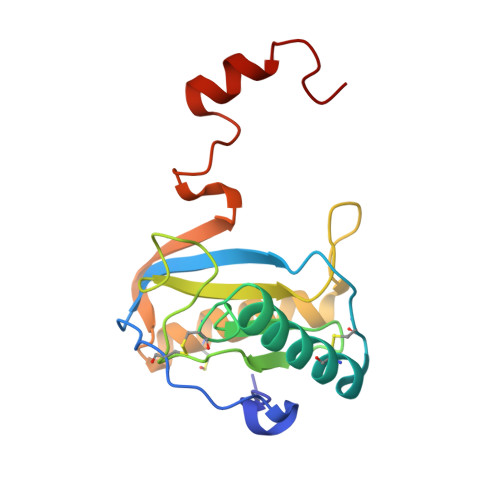Crystal structure of the C-terminal peptidoglycan-binding domain of human peptidoglycan recognition protein Ialpha
Guan, R., Malchiodi, E.L., Qian, W., Schuck, P., Mariuzza, R.A.(2004) J Biol Chem 279: 31873-31882
- PubMed: 15140887
- DOI: https://doi.org/10.1074/jbc.M404920200
- Primary Citation of Related Structures:
1SK3, 1SK4 - PubMed Abstract:
Peptidoglycan recognition proteins (PGRPs) are pattern recognition receptors of the innate immune system that bind, and in some cases hydrolyze, peptidoglycans (PGNs) on bacterial cell walls. These molecules, which are highly conserved from insects to mammals, participate in host defense against both Gram-positive and Gram-negative bacteria. We report the crystal structure of the C-terminal PGN-binding domain of human PGRP-Ialpha in two oligomeric states, monomer and dimer, to resolutions of 2.80 and 1.65 A, respectively. In contrast to PGRPs with PGN-lytic amidase activity, no zinc ion is present in the PGN-binding site of human PGRP-Ialpha. The structure reveals that PGRPs exhibit extensive topological variability in a large hydrophobic groove, located opposite the PGN-binding site, which may recognize host effector proteins or microbial ligands other than PGN. We also show that full-length PGRP-Ialpha comprises two tandem PGN-binding domains. These domains differ at most potential PGN-contacting positions, implying different fine specificities. Dimerization of PGRP-Ialpha, which occurs through three-dimensional domain swapping, is mediated by specific binding of sodium ions to a flexible hinge loop, stabilizing the conformation found in the dimer. We further demonstrate sodium-dependent dimerization of PGRP-Ialpha in solution, suggesting a possible mechanism for modulating PGRP activity through the formation of multivalent adducts.
Organizational Affiliation:
Center for Advanced Research in Biotechnology, W. M. Keck Laboratory for Structural Biology, University of Maryland Biotechnology Institute, Rockville, Maryland 20850, USA.
















